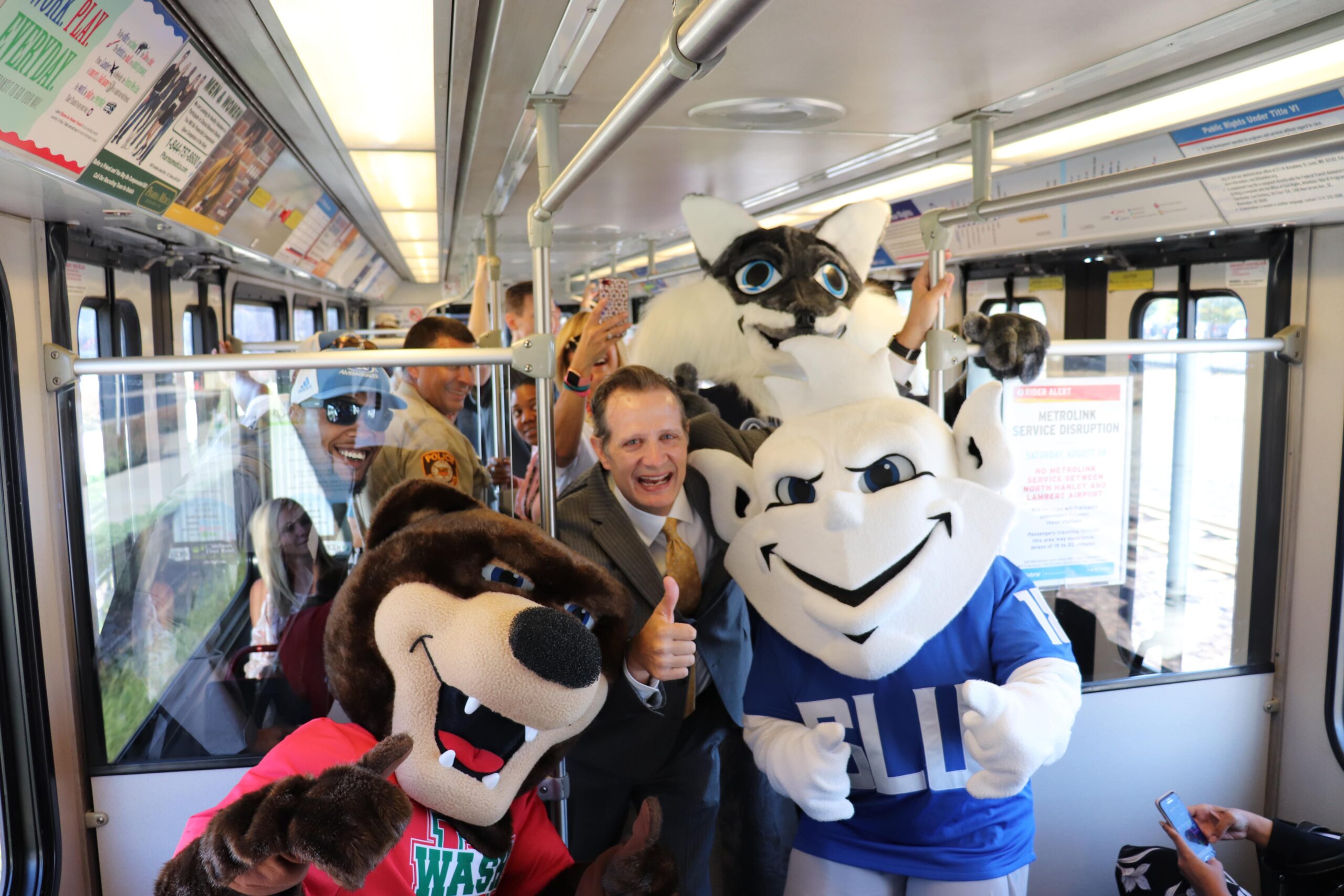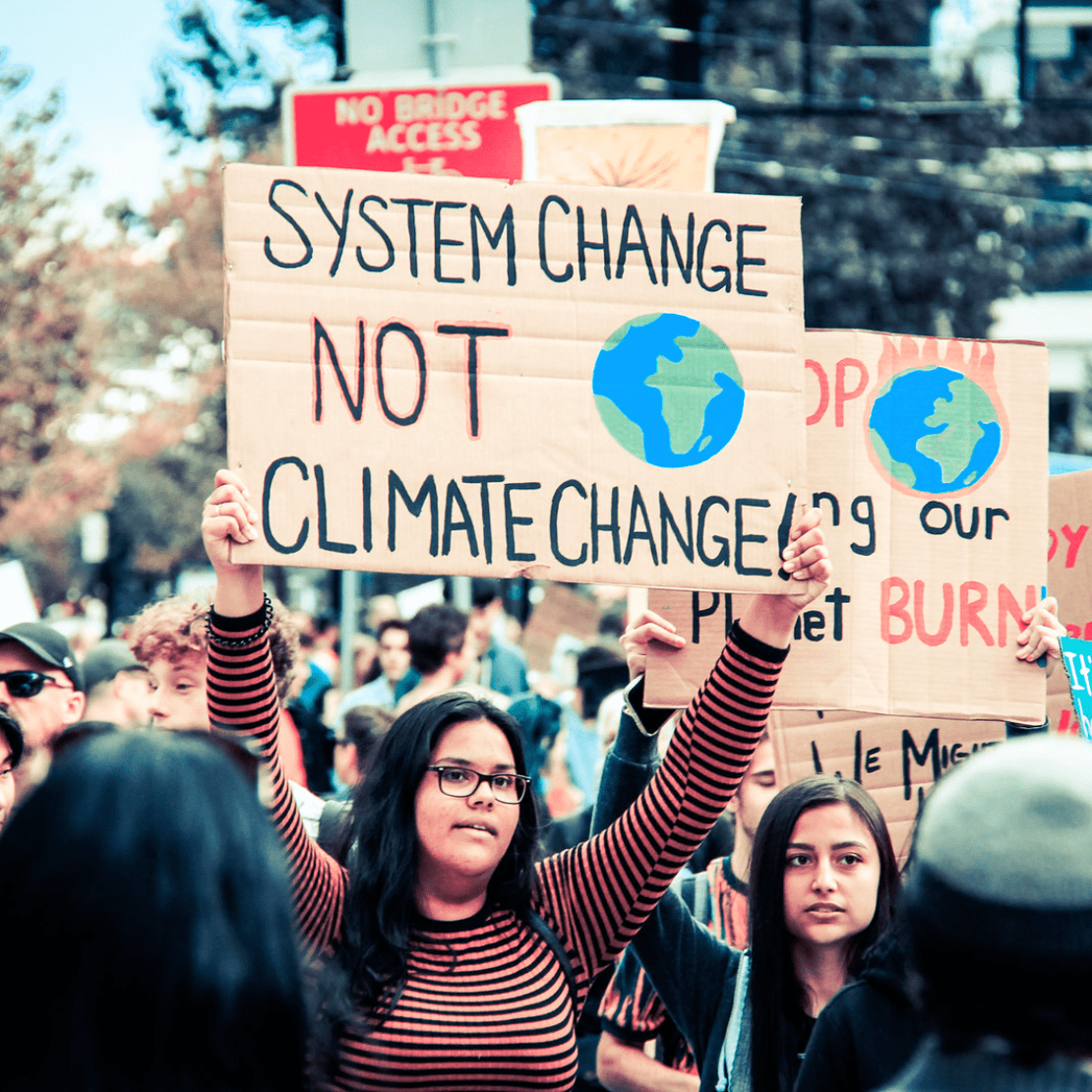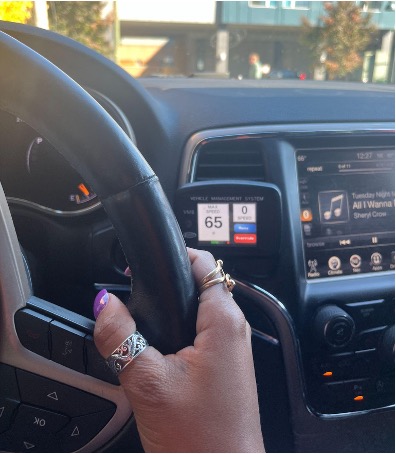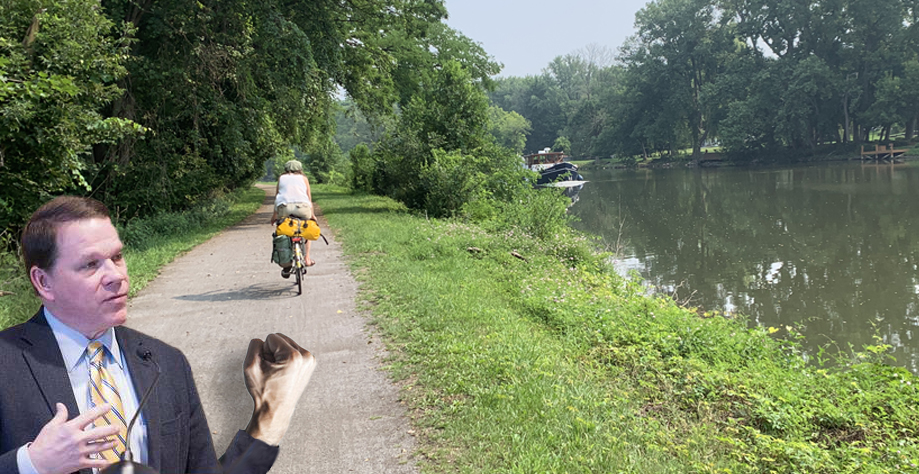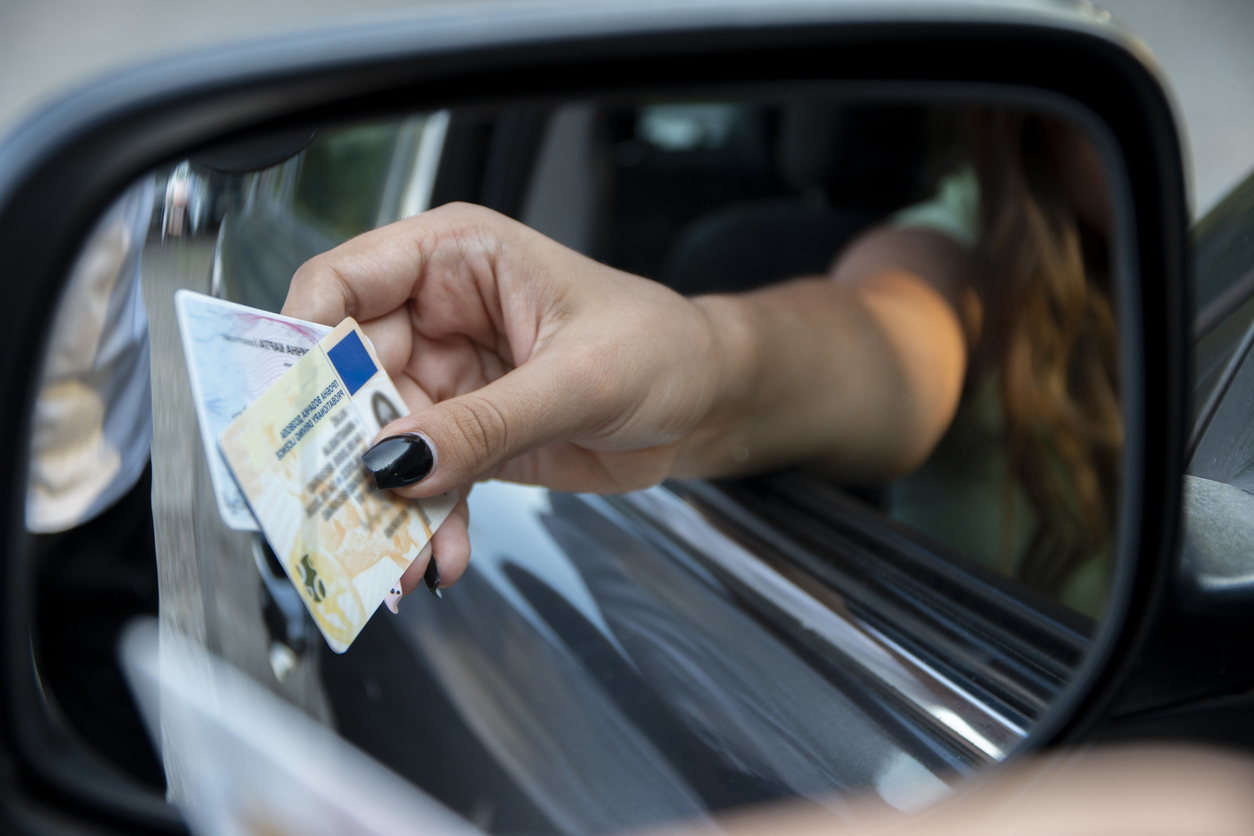On a warm Thursday last month, college students criss-crossed the St. Louis region in a unique bragging-rights competition that took place not in the classroom or the stadium, but on buses and trains.
Now in its fourth iteration, advocates at Citizens for Modern Transit recently brought college campuses together to compete in the College Transit Challenge as part of the annual Week Without Driving. The competitors — students at Saint Louis University, Southwestern Illinois College, University of Missouri-St. Louis, and Washington University in St. Louis, also known as Wash U — were challenged to log as many rides as possible over the course of a single day, which ended with registrants tracking 240 trips in all.
“We're always trying to think outside the box on ways to promote public transit, build ridership on the system, and really get to those people who maybe have never used transit,” Kimberly Cella, executive director of Citizens for Modern Transit, told Streetsblog. “And so we know that this event is a fun, exciting way to pit five [schools] against each other to generate that collegiate spirit … and underscore the critical need for transit access to higher education institutions.”
The colleges themselves brought the spirit to the kick-off events — or at least their mascots did.
Kashmir, the Southwestern Illinois College Snow Leopard; Louie the UMSL Triton, the Wash U Bear, and Archie, the St. Louis University Billiken (editor's note: yes, that one requires some explanation) helped kickoff the daylong competition at the annual “Mascot Meetup” before hopping on the train to a breakfast celebration. Though Wash U’s Bear, true to his nature as a hibernator, slept through his alarm and arrived twenty minutes late.
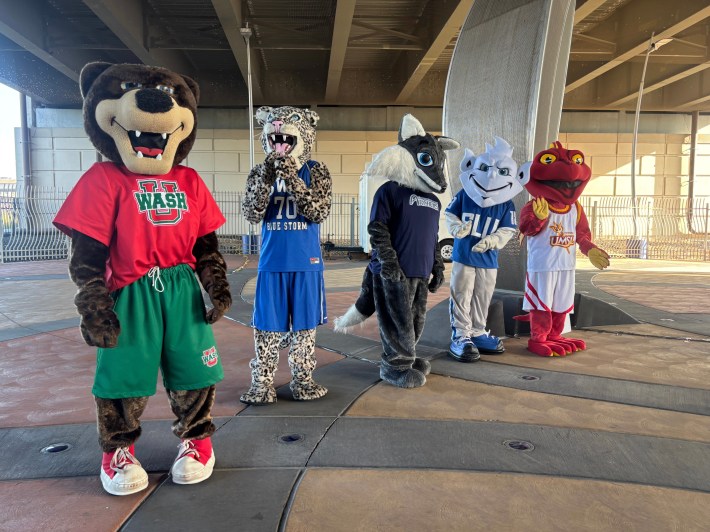
After the event ended, all of those cuddly creatures had an easy time getting back to campus, too. All participating institutions have light rail stations either on campus or within easy walking distance, and all are served by bus routes, too. Through their colleges, St. Louis-area students can even obtain free or discounted Metro U-Pass for unlimited bus and light rail rides.
However, simply having easy access to transit doesn’t necessarily mean college students will actually take it. A 2022 survey found that 78 percent of U.S. undergraduates had a car, but just eight percent used transit to get to school.
That same survey also identified several barriers to getting these students onboard, such as inconvenient routing and lack of frequent service.
Of course, it will take broader advocacy and time to address the structural factors that could make transit a truly attractive option to college students. In the meantime, though, some schools are trying to create a culture of riding buses and trains.
UMSL, for instance, launched a series of guided field trips exploring the city by taking buses and trains, familiarizing students with the transit system and encouraging them to explore the greater St. Louis community.
“We were listening to all of the different reasons why students did or didn’t take Metro on campus, and we realized there is a need [to show them] all of the wonderful experiences that they were missing in the city,” explains Remy Xa, a student program manager at UMSL. “So we created little brochures and little guides, and we’ve been bringing students on these guided Metro field trips with the priority of being eco-sustainable, affordable and accessible to as many people as possible.”
But experts like Cella argue that colleges everywhere should work on getting more of their students into the habit of taking public transit, which can turn them into riders for life. And as ridership increases, eventually, so will service — potentially turning transit into a powerful tool for college recruitment, too.
“[For] colleges and universities looking for ways to draw students to their campuses, promoting transit is just one more benefit that they may not be realizing,” she says.
In the end, it was the St. Louis University Billikens who took home the College Transit Challenge prize, besting runner-up UMSL by just a few trips. (Wash U, the winner for the past two years, came in third place). Ultimately though, the real winner was St. Louis itself, which saw fewer cars on the road that day — and a few more happy college students experiencing their city in a new way.
This article featured additional reporting by Kea Wilson.
